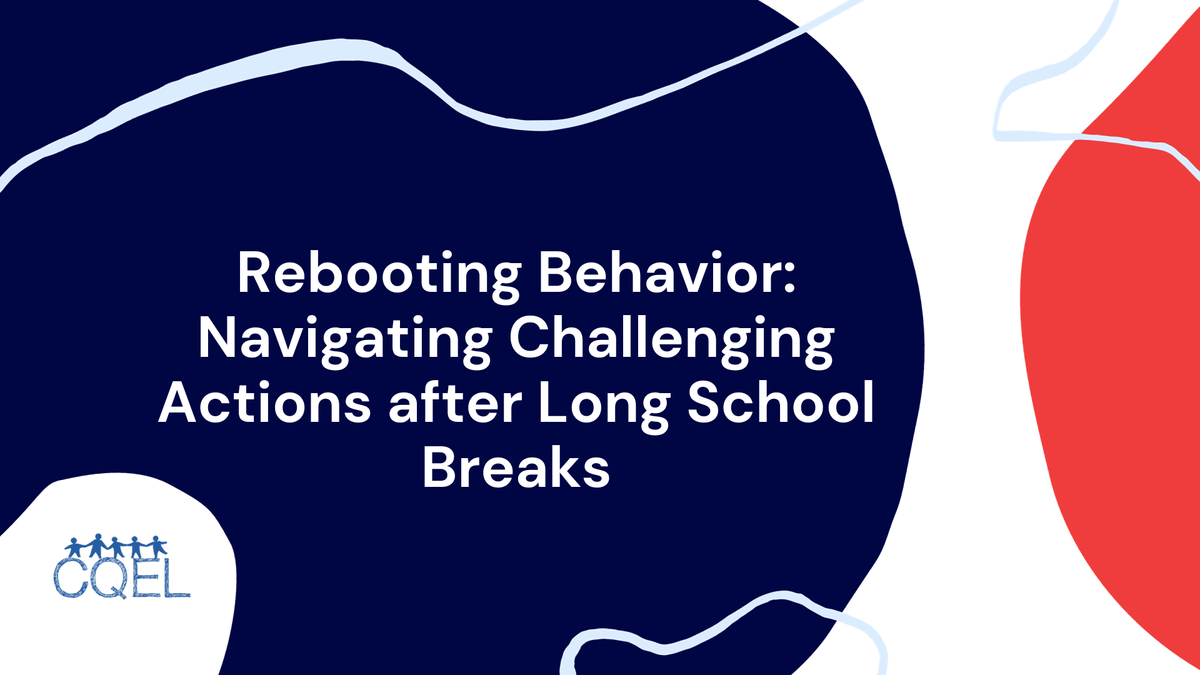Rebooting Behavior: Navigating Challenging Actions after Long School Breaks
Suddenly, the structured environment and consistent school expectations are replaced by unstructured playtime, looser schedules, and, sometimes, a surge of pent-up energy. This can lead to challenging behaviors, leaving parents and caregivers feeling frustrated and unsure how to respond.

Long school breaks, whether for summer vacations, holidays, or unexpected closures, can throw even the most well-adjusted children's routines out of whack. Suddenly, the structured environment and consistent expectations of school are replaced by unstructured playtime, looser schedules, and sometimes, a surge of pent-up energy. This can lead to challenging behaviors, leaving parents and caregivers feeling frustrated and unsure how to respond. With a little understanding and proactive strategies, you can navigate this transitional period and guide your child back to positive behavior patterns.
Understanding the Why:
- Loss of Routine: Structure and predictability provide a sense of security for children. Disrupting their usual routines can lead to confusion and anxiety, manifesting in challenging behaviors like tantrums, disobedience, or clinginess.
- Boredom and Overstimulation: Unstructured time can lead to boredom, fueling disruptive behaviors as children seek external stimulation. Conversely, overstimulating activities during breaks can leave children feeling overwhelmed and prone to meltdowns.
- Emotional Rollercoaster: Holidays and celebrations can be exciting, but they can also be emotionally charged. Stressful family dynamics, financial pressures, or changes in routine can trigger emotional outbursts in children.
Redirecting with Empathy:
- Maintain a Calm Presence: Children feed off our energy. When they exhibit challenging behavior, stay calm and avoid reacting impulsively. Take a deep breath, speak in a soft, soothing tone, and offer reassurance.
- Acknowledge their Feelings: Validate their emotions, even if you don't condone their actions. Phrases like "I see you're feeling frustrated" or "It's okay to be excited" help them feel heard and understood.
- Offer Choices and Alternatives: Instead of issuing direct commands, offer choices within clear boundaries. "Would you like to play outside or read a book?" or "You can choose to clean up your toys now or after your snack" empowers them to make decisions and feel in control.
- Positive Reinforcement: Catch them being good! When they exhibit positive behavior, acknowledge and praise them. This reinforces desired behaviors and encourages them to repeat them.
Rebuilding Routines:
- Set Clear Expectations: Gently reintroduce routines and expectations as the break ends. Discuss bedtime schedules, screen time limits, and appropriate behavior during mealtimes. Consistency is key to rebuilding a sense of normalcy.
- Schedule Active Play: Physical activity is a great way to channel pent-up energy and release stress. Plan outdoor playdates, family walks, or enroll them in sports or dance classes to help them burn off steam.
- Connect and Communicate: Make time for quality, one-on-one interaction. Read together, play games, or simply chat about their day. This strengthens emotional bonds and provides opportunities for open communication.
Remember:
- Patience is Key: It takes time to adjust to new routines and manage emotions after a break. Be patient with yourself and your child. Progress may be slow, but celebrate even small victories.
- Seek Support: Don't hesitate to reach out for help if you're feeling overwhelmed. Talk to teachers, counselors, or parenting groups for advice and support. Remember, you're not alone in this journey.
- Focus on the Positive: Remind yourself of the joys of having children! Celebrate their unique personalities and embrace the fun that comes with their ever-changing world.
Long school breaks can be a time for relaxation and family bonding, but they can also present challenges. By understanding the reasons behind challenging behavior, remaining calm and empathetic, and gradually reintroducing routines, you can help your child navigate this transition smoothly and build a foundation for a positive and productive new school year.
Resources:
- Zero to Three: https://www.zerotothree.org/
- The American Academy of Child and Adolescent Psychiatry (AACAP): https://www.aacap.org/
Remember, you've got this! With a little understanding and proactive planning, you can help your child transition back to school with ease and set them up for a successful and happy year ahead.
